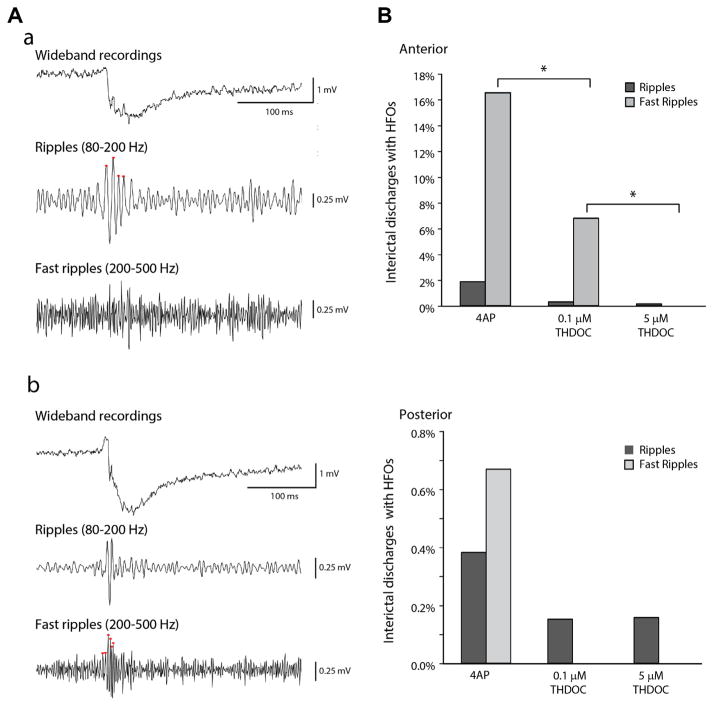Fig. 4.
HFOs during interictal discharges. (A) Example of an interictal discharge co-occurring with a ripple (a) or with a fast ripple (b) in the anterior piriform cortex under 4AP bath application. Note in b that the fast ripple is visible on the descending phase of the spike. (B) Bar graph showing the proportion of interictal events, in the anterior and posterior piriform cortex, co-occurring with HFOs in the 4AP control (anterior: n=19, events=1235; posterior: n=19, events=1047), 4AP+0.1 μM THDOC (anterior: n=7, events=665; posterior: n=7, events=659) and the 4AP+5 μM THDOC (anterior: n=6, events=633; posterior: n=6, events=636) condition. The application of THDOC induced a significant decrease in the proportion of interictal spikes co-occurring with HFOs, mainly in the fast ripple frequency range and in the anterior region. (*p<0.05) Note that the proportion of interictal spikes co-occurring with HFOs in the posterior region of the piriform cortex is almost negligible.

